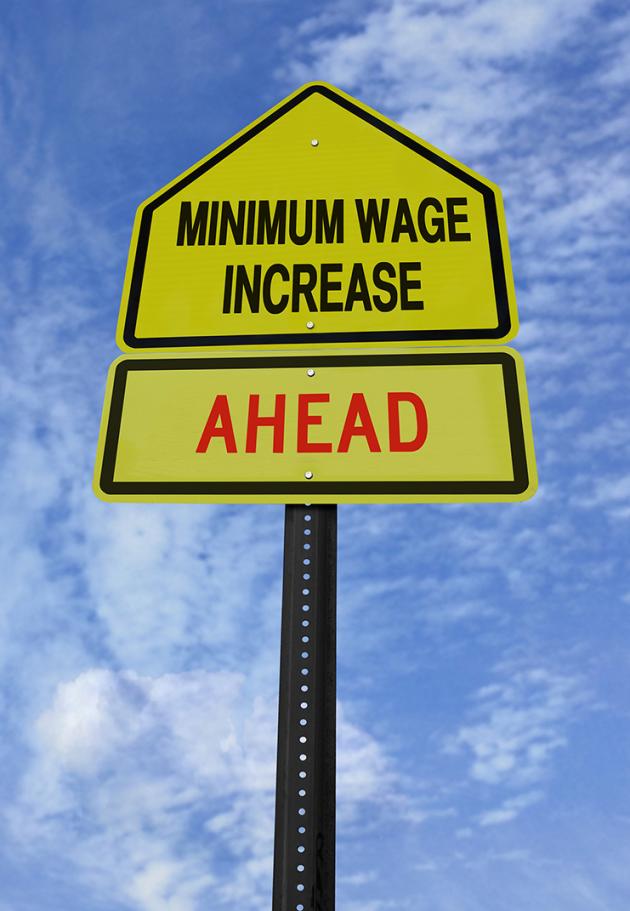CHICAGO — Without a legal team at their disposal, it falls to small-business owners, including owners of drycleaning companies, to stay on top of proposed and approved legislation that could impact their businesses.
Keeping in compliance with constantly shifting laws and regulations, however, can be challenging, to say the least.
In order to educate owners on possible challenges in 2024, the National Federation of Independent Business (NFIB) recently hosted “The 2024 Small Business Landscape — Legal, Regulatory, and Economic Updates for the New Year,” a webinar designed to shed light on some of the new rules that have been or soon will be put into place.
In Part 1 of this series, we examined the new Joint Employer Rule, which could impact owners where an employee in a single position could be considered working for more than one company, along with other topics. In Part 2, we looked at proposed legislation that could be enacted in 2024 that would affect overtime rules. Today, we’ll conclude this series by reviewing other legislation and regulations on the horizon, or already here.
Independent Contractors
“The new Independent Contractor Rule is another department of labor rule that will impact many, many small businesses,” says Beth Milito, executive director of the NFIB’s Small Business Legal Center, “because what business does not have a contractor or an outside vendor?”
The proposed regulation would mean that more workers will be classified as independent contractors, Milito says, “so this is another area where an audit in your business would be a good idea.”
A key element of the proposed rule would be a “totality-of-the-circumstances” analysis to determine whether a worker is economically dependent upon an employer for work, versus being in business for themselves, under the Fair Labor Standards Act (FLSA).
“Let's use an example of an IT person,” Milito says. “They started out as a contractor coming in once a month, then they were coming in several times a month. And now that person is in your office, sitting at a desk next to employees. To an outsider, it would look like they were an employee of your business. That's a situation where you may want to think about putting the individual on payroll as a W-2 employee.”
A worker is either an independent contractor or an employee, she says — “It’s either one category or the other, and you want to make sure that workers are classified appropriately, and it’s confusing. There are a lot of different tests for independent contractors — the IRS has a test, a lot of state unemployment agencies have different tests.
The proposed Department of Labor rule would make it more likely that more workers will be classified as ‘employees’ for purposes of the Wage and Hour laws. “So that means they could potentially be eligible for overtime,” Milito says. “You don't want to have misclassification of either exempt versus non-exempt employees or employees versus independent contractors. Wage and hour classification mistakes are expensive to fix.”
Milito believes that it's “near certain” that this new coming out in the near future, “and then it would take effect in early 2024 because usually there's a 30-to-60-day period before a rule takes effect to give businesses time to get into compliance.
Beneficial Ownership Information Reporting Rule
A new rule that went into effect on Jan. 1, 2024, is the Beneficial Ownership Information Reporting Rule. “This was a new rule from the Financial Crimes Enforcement Network, otherwise known as FinCEN, which is part of the U.S. Treasury Department,” Milito says.
This law was part of the Corporate Transparency Act, passed by Congress. “The intent of the Corporate Transparency Act is to enhance the transparency of business ownership to reduce financial crimes, such as money laundering,” Milito says. “Unfortunately, the role is going to affect many, many small businesses. We at NFIB are pushing very hard for a delay of the rule.”
As it stands at the moment, companies that were created before Jan. 1, 2024, will have until Jan. 1, 2025, to file their initial beneficial ownership information (BOI) report. Companies created on Jan. 1, 2024, will have 90 calendar days after receiving notice of the company’s creation or registration to file its initial BOI report.
Which businesses fall under this new law? “Virtually all LLCs, corporations, partnerships — any entities formed under a state law, and that need to file organization charter with a secretary of state,” Milito says. “This is very broad. Sole proprietorships and general partnerships are generally not considered reporting companies, since they are not entities formed by a secretary of state filing.”
Filing will be able to be completed electronically through the FinCEN website (the system is currently still under development). Information required will include the full legal name of the company, its current address, the state where the company is registered, its Taxpayer ID Number, and an Employer Identification Number or Social Security Number for the beneficial owners of the company.
“Anyone who has a beneficial ownership in the company is going to have to report their legal name, their date of birth, the residential address, and identifying number from a passport, driver's license, or other identifying document and an image of the identification document,” Milito says. “That's a lot of personal information that will need to be reported into this database that FinCEN is still creating.”
The latest updated information can be found at https://www.fincen.gov.
Minimum Wage Updates
Several states updated their minimum wage requirements as of Jan. 1, 2024. These states include:
- Alaska — $11.73 (up from $10.85)
- Arizona — $14.35 (up from $13.85)
- California — $16.00 (up from $15.50)
- Colorado — $15.69 (up from $15.00)
- Connecticut — $11.73 (up from $10.85)
- Delaware — $13.25 (up from $11.75)
- Hawaii — $14.00 (up from $12.00)
- Illinois — $14.00 (up from $13.00)
- Maryland — $15.00 (up from $13.25)
- Maine — $14.15 (up from $10.85)
- Michigan — $11.73 (up from $13.80)
- Minnesota — $10.85 (up from $10.59)
- Missouri — $12.30 (up from $12.00)
- Montana — $10.30 (up from $9.95)
- Nebraska — $12.00 (up from $10.50)
- New Jersey — $11.73 (up from $14.13)
- New York City, Long Island and Westchester — $16.00 (up from $15.00)
- New York (remainder of state) — $15.00 (up from $14.20)
- Ohio — $10.45 (up from $10.10)
- Rhode Island — $14.00 (up from $13.00)
- South Dakota — $11.20 (up from $10.80)
- Vermont — $13.67 (up from $13.18)
- Washington — $16.28 (up from $15.74)
“The state minimum wages are always available on the US Department of Labor's website and they keep this updated all the time,” Milito says. “The U.S. Department of Labor also has a good webpage that has break and meal break laws, too, and break it out by state. There’s actually a lot of helpful information on the US Department of Labor website, and I don't say that about all federal agencies. The U.S. Department of Labor actually has some very helpful information on there, not just about the federal labor laws, but also about the state labor laws, as well.”
For Part 1 of this series, click HERE. For Part 2, click HERE.
Have a question or comment? E-mail our editor Dave Davis at [email protected].








